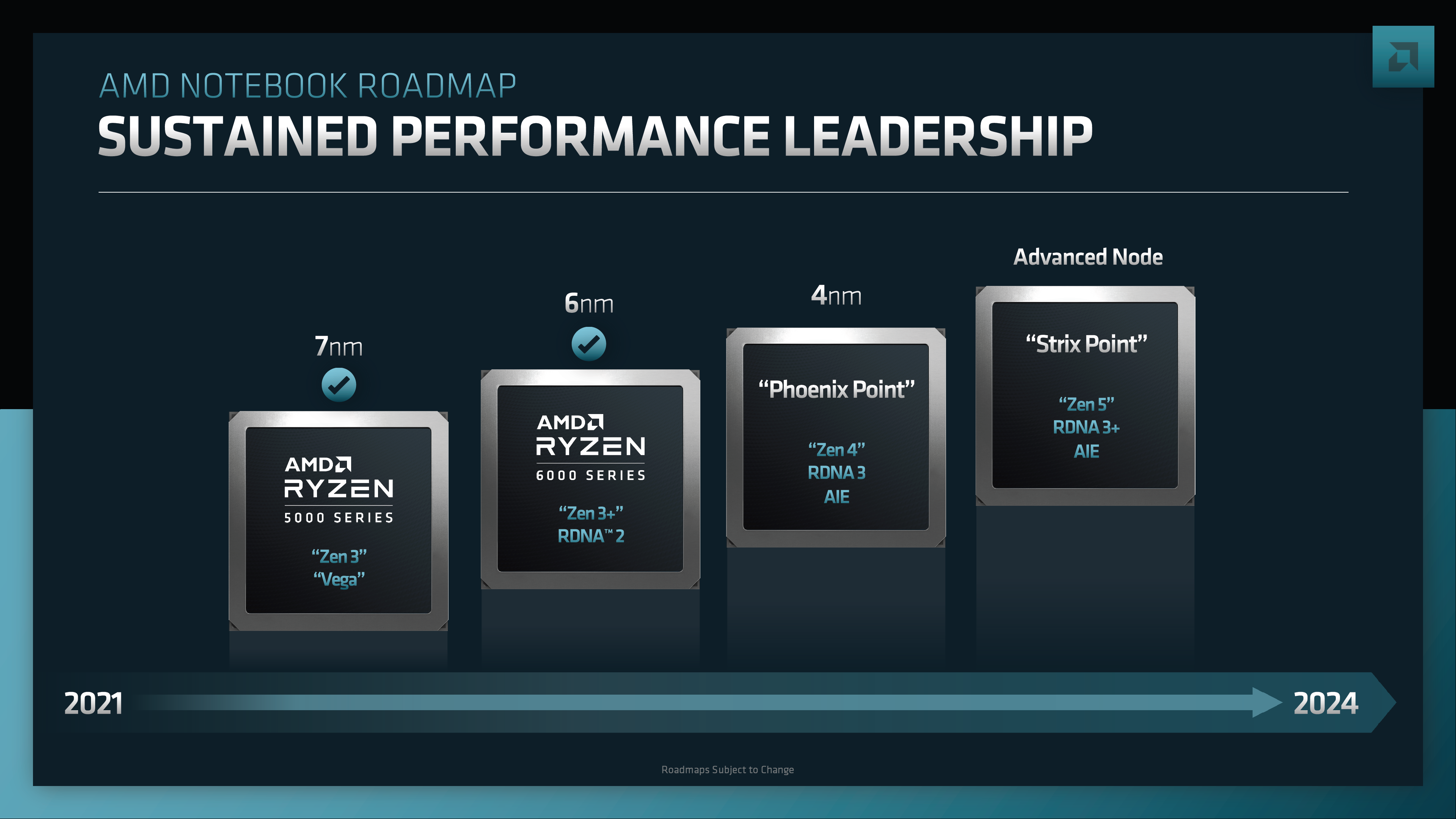New Ryzen APUs coming to thin-and-light gaming laptops in 2023
Team Red is teasing a big leap in APU gaming performance

Hold on to your hats, gamers. AMD’s massive new hardware roadmap has been released on the company’s Finanical Analyst Day, with CEO Lisa Su revealing a range of upcoming hardware for both consumer and business purposes.
Buried among the announcements of Zen 5 CPUs and details on RDNA 3 lies a neat paragraph detailing AMD’s planned release of new ‘Phoenix Point’ and ‘Strix Point’ Ryzen APUs for thin-and-light gaming laptops, starting in 2023.
For the unaware, an APU is an Accelerated Processing Unit; a chip that combines a CPU and an integrated GPU on a single component. The Phoenix Point APUs will utilize the Zen 4 processor microarchitecture and RDNA 3 graphics, with power requirements ranging from 35W to 45W. These chips will follow AMD’s naming convention and become the Ryzen 7000H-series.
The Strix Point APUs, which will be launching in 2024, will use the Zen 5 CPU architecture expected to release in desktop CPUs the same year. They’ll also be debuting AMD’s RDNA 3+ iGPU cores and are rumoured to feature a new L4 cache system. AMD is also putting out new data center APUs with similarly impressive specs.

Analysis: Can we expect better gaming notebooks in 2023?
These APUs have huge potential for ultra-portable gaming notebooks. The previous generation of 6000H-series ‘Rembrandt’ APUs were the first to implement RDNA architecture (older H-series APUs were still running Vega graphics) and included the excellent Ryzen 7 6800HS laptop processor found in Corsair's new gaming laptop.
RDNA 3 (and its 3+ variant) is likely to prove highly beneficial for gaming laptops, either with or without an accompanying discrete GPU. With Rembrandt iGPUs outperforming old 1080p GPUs like the GTX 1060, we can likely expect solid 1080p gaming performance from these new APUs.
This could make true FHD gaming on an ultra-thin notebook a reality, without the need to compromise heavily on graphical settings or framerates. The low power requirements and (hopefully) reduced heat production on the Phoenix and Strix Point APUs makes them ideal candidates for gaming on integrated graphics in a thin-and-light system, too.
Get daily insight, inspiration and deals in your inbox
Sign up for breaking news, reviews, opinion, top tech deals, and more.

Christian is TechRadar’s UK-based Computing Editor. He came to us from Maximum PC magazine, where he fell in love with computer hardware and building PCs. He was a regular fixture amongst our freelance review team before making the jump to TechRadar, and can usually be found drooling over the latest high-end graphics card or gaming laptop before looking at his bank account balance and crying.
Christian is a keen campaigner for LGBTQ+ rights and the owner of a charming rescue dog named Lucy, having adopted her after he beat cancer in 2021. She keeps him fit and healthy through a combination of face-licking and long walks, and only occasionally barks at him to demand treats when he’s trying to work from home.